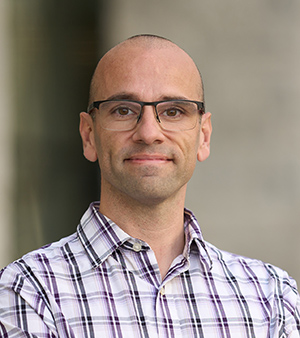Health Canada grant funds innovative drug-checking technology
By Crystal MackayNursing professor Abe Oudshoorn is part of a team of researchers at Western that have partnered with startup company SCATR Inc. to pilot and research the effectiveness of drug checking technology at safe consumption sites.
The technology, developed by SCATR Inc. with the support of Western University infrastructure, will aim to allow those who use drugs at safe consumption sites to understand what dangerous fillers and other drugs like fentanyl analogues might be in their sample, so they can make informed decisions about their use.
It is being rolled out at 11 safe consumption sites across Ontario, Nova Scotia and B.C. thanks to a new grant from Health Canada’s Substance Use and Addictions Program (SUAP) announced by Carolyn Bennett, Minister of Mental Health and Addictions.

Abe Oudshoorn, Arthur Labatt Family School of Nursing
“Thank you to Western University, as well as to all the organizations that received funding for their continued dedication towards reducing stigma, improving access to substance use supports, and inspiring change within our communities,” said Bennett.
For François Lagugné-Labarthet, a professor of chemistry at Western and expert in Raman spectroscopy, it isn’t every day that his research has a direct impact on society with the potential to save lives.
“The devastating effects of the opioid crisis are on the news almost every day and the fatalities are staggering,” he said. “Our hope is to help find solutions to reduce those numbers.”
Lagugné-Labarthet is working with a startup company called SCATR Inc., founded by Western grad Ari Forman, BSc’20, and Alex Boukin, a recent graduate from Toronto Metropolitan University. The team, supported by nursing professor Abe Oudshoorn, and biology professor Kathleen Hill, is working together to pilot and research the effectiveness of the technology at 11 sites, including a new permanent safe consumption site run by Regional HIV-AIDS Connection in London, Ont.
“We continue to see overdoses and people experiencing on-going health care challenges as a result of the toxic drug supply in our community,” said Sonja Burke, director of harm reduction services at Regional HIV-AIDS Connection. “So, this really is a game changer. It will provide people who use drugs a way to have more information at their fingertips and empower them in their decision making.”
Using light to understand composition
The drug-checking device uses Raman spectroscopy, a non-destructive process that analyzes how light interacts with chemical bonds within a material to provide detailed information about its molecular composition and chemical structure.
Workers at the supervised consumption sites can insert a small drug sample from the users into the device and know almost instantaneously exactly what it contains.
Because the ten devices are networked together and utilize powerful machine-learning algorithms, the research team can also keep track of the unique fingerprints of each sample and flag any samples that have been shown to have dangerous properties or cause adverse reactions.
At each site, after the drug is checked, data is entered about whether the composition of the drug is the same as what was expected, whether there were any adverse reactions (including overdose), and whether or not the person checking their sample changed their behaviour by reducing their dose or choosing not to use it after understanding its composition.
“The more people use it, the more the database becomes enriched with data which only makes it more accurate and more helpful,” said Forman.
Part of the SUAP grant will be used to investigate and refine the networking capabilities of the devices.
An idea years in the making
The impetus for the idea began when Forman and Boukin, undergraduate students at the time, entered a Health Canada sponsored competition in 2018 called the Drug Checking Technology Challenge with guidance and mentorship from Lagugné-Labarthet. The federal competition challenged innovators to develop technology that could scan drug samples non-destructively to identify its composition. The prize money from that competition allowed the team to further develop and scale up the technology in preparation for the pilot.
“The unique thing about our technology is that it was designed from the ground up for the sole purpose of harm reduction, and the features were developed with feedback from people with lived experience who use drugs,” said Forman.
The team is now working to refine their database so that everything that they want to be able to detect has been scanned as a reference standard. They do that by comparing their results with results from the mass spectroscopy lab at Western, which is the gold standard for detecting composition but is destructive, non-portable, and takes much longer to produce results.
The team hopes this is the first step to eventually expanding the use of the technology across Canada and in other countries to help address the opioid crisis globally.

